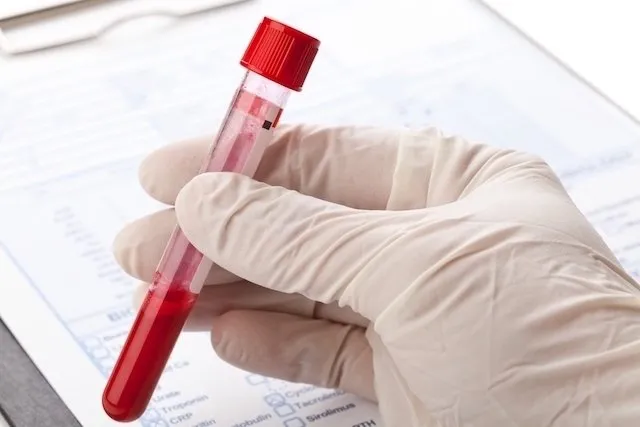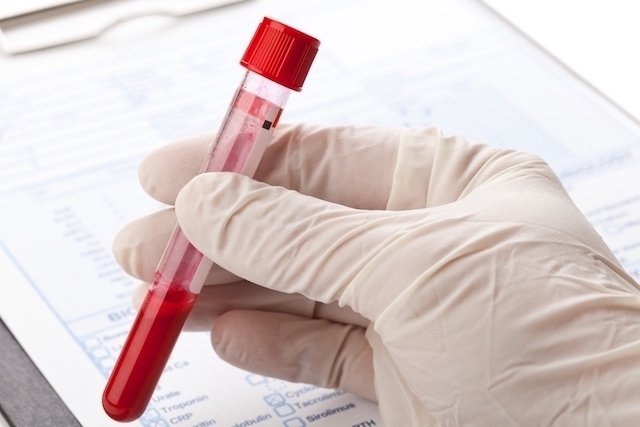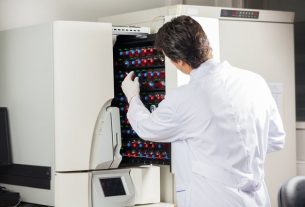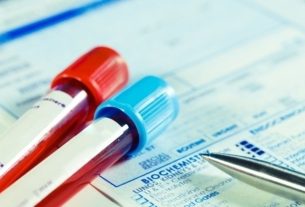Anti-CCP, or autoantibodies against cyclic citrullinated peptide, is a type of test that is often used to assist in the diagnosis of rheumatoid arthritis. This test aims to recognize the presence of CCP autoantibodies in the blood, which are antibodies produced by the immune system that attacks the cells and healthy tissues of the joints.
This test is usually performed together with or after the rheumatoid factor test, another type of test for the detection of rheumatoid arthritis. However, anti-CCP helps to make a more accurate diagnosis, because while the rheumatoid factor can be present in other diseases such as lupus or Sjögren syndrome, for example, or even in healthy people, anti-CCP is more specific and if positive, it indicates the presence of rheumatoid arthritis. Learn more about the rheumatoid factor.

What is it for
The anti-CP test is used to measure the amount of CCP autoantibodies produced by the immune system and attack the joint lining, causing inflammation and symptoms of rheumatoid arthritis, such as long-lasting pain, swelling, difficulty holding objects or walking, and even malformation in the joint. Learn how to identify rheumatoid arthritis.
How the examination is carried out
The anti-CCP test is very simple, all it needs is a small amount of blood taken by a trained professional who is sent to the laboratory to perform the analysis.
The laboratory is conducted in the laboratory using the immunoenzyme ELISA method, in which reagents and enzymes are added after proper processing of the sample, which, when binding to the CCP’s antibodies, produce a color that refers to a positive reaction in rheumatoid arthritis.
In order to carry out the anti-CCP test, no special preparation is required, and it is recommended to inform the doctor about possible health problems, in addition to any medication, vitamins or dietary supplements that are used.
What the results mean
In healthy people, the Anti-CCP test is usually negative and shows values below 20.0 U/mL, which means that no CCP antibodies have been found in the body and the person does not have rheumatoid arthritis. However, values above 20 U/mL may indicate rheumatoid arthritis.
The results of the anti-CCP test are usually analyzed together with the rheumatoid factor, as these tests can be carried out simultaneously or the doctor can first order the rheumatoid factor and if it is positive, recommend anti-CCP to confirm arthritis.
In this way, test values help to confirm rheumatoid arthritis and may include:
- Positive anti-CCP and positive rheumatoid factor: indicates that the person has rheumatoid arthritis;
- Positive CPC and negative rheumatoid factor: it may mean that the person is in the early stages of rheumatoid arthritis or that it can develop the disease in the future;
- Anti-CCP negative and rheumatoid factor negative: indicates that the person does not have rheumatoid arthritis.
These results should always be interpreted and evaluated by a rheumatologist, and in almost all cases further tests are necessary to learn what causes your symptoms.
We regularly update our content with the latest scientific information to maintain an exceptional level of quality.
Bibliography
- LUBAN, Stanislaw; LI, Zhan-Guo. Citrullined peptide and its relevance for rheumatoid arthritis: an update. Int J Rheum Dis. 13 4; 284-7, 2010
- L’PEZ-LONGO, Francisco Javier; S’NCHEZ-RAM-N, Silvia; CARRE-O, Luis. The value of anticyclic citrullinated peptide antibodies in rheumatoid arthritis: Do they imply new risk factors?. Drug News Perspect . 2009 Nov;22(9):. 22. 9; 543-8, 2009ALM, Linda Mathsson; et al. The performance of anticyclic citrullinated peptide assays in the diagnosis of rheumatoid arthritis: a systematic review and meta-analysis. Clin Exp Rheumatol. 36. 1; 144-152, 2018USSCHIMURA, Kunihiro; et al. Meta-Analysis: Diagnostic accuracy of the anti-cyclic citrullinated peptide antibodies and rheumatoid arthritis. Ann Intern Med. 146. 11; 797-808, 2007

Sign up for our newsletter and stay up to date with exclusive news
that can transform your routine!
Warning: Undefined array key "title" in /home/storelat/public_html/wp-content/plugins/link-whisper-premium/templates/frontend/related-posts.php on line 12
Warning: Undefined array key "title_tag" in /home/storelat/public_html/wp-content/plugins/link-whisper-premium/templates/frontend/related-posts.php on line 13




